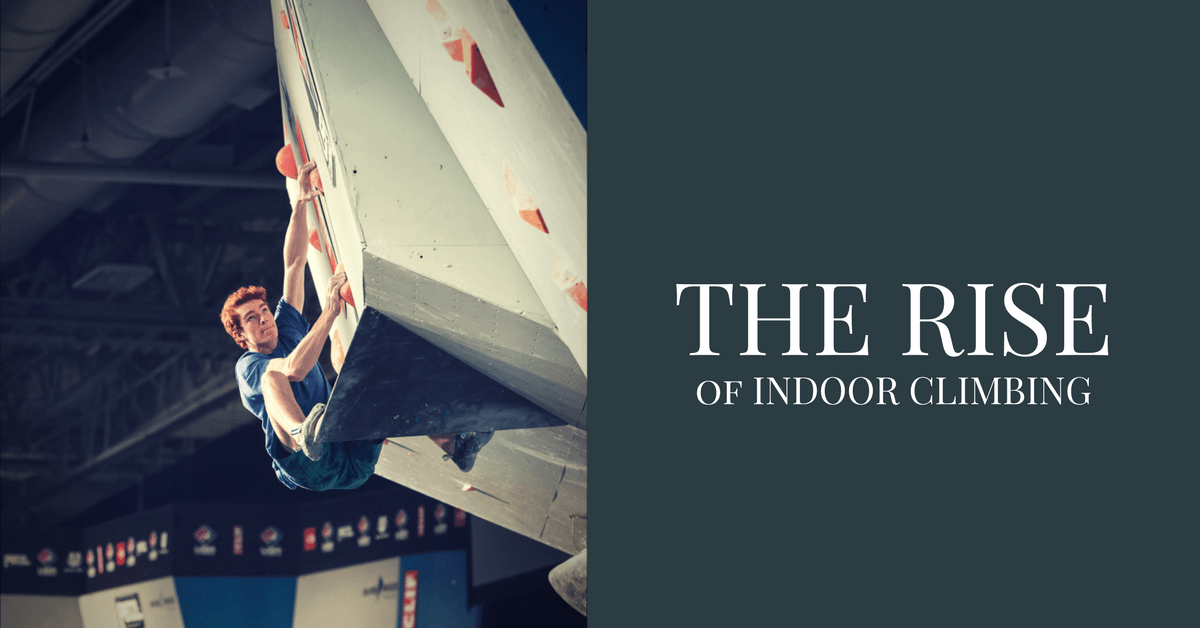The Rise of Indoor Climbing

The New York Times recently ran an article aptly called “A Boom in Rock Climbing, Minus the Rocks,” chronicling the growing popularity of indoor rock climbing facilities.
For those who don’t have easy access to an outdoor climbing area, indoor rock climbing gives them the next best thing, substituting hand and foot holds for the nooks and crannies found on the sides of an outdoor crag. The idea of indoor climbing has gained traction in the past few years, and as NYT writer Joanne Kaufman points out, most major cities (and a growing number of smaller cities) now have at least one commercial climbing gym.
A Success Story

Brooklyn Boulders (BKB), the facility featured in the article, opened the doors of its first facility in Brooklyn in 2009 and has now expanded operations with climbing gyms in Queens, Chicago, and Somerville, Massachusetts. Business is booming, and they’re planning to continue their expansion, according to BKB president, Lance Pinn.
The company currently gets an average of 1,000 visitors a day at their facility which includes more traditional gym fare like yoga, Pilates, fitness classes and gym machines. That said, management says that 90% of their daily visitors make the climbing wall a part of their overall fitness journey. That’s pretty impressive, considering that a climbing wall was a big financial risk — they’re expensive to build — with no guarantee of return on investment.
The Logistics of Serving the Needs of Novice Climbers

Thanks to the more mainstream fitness options at facilities like Brooklyn Boulders, there’s no shortage of novices eager for a chance to give the sport a try. They’re not about to invest money in things like indoor climbing gear or even a good pair of climbing shoes, which are a must for a successful ascent.
Enter Butora USA, a manufacturer of high-quality, comfortable climbing shoes, who has partnered with Brooklyn Boulders to provide rental shoes to enable novice climbers to test (and hone) their potential climbing skills. Butora, a Korean synonymous with “persistence” and “determination” is an apt name for a company that’s the U.S. offshoot of its Korean namesake. Its American translation is also perfect for a company manufacturing shoes for people who need those precise qualities to overcome the inherent challenges of successfully scaling a sheer vertical surface, whether it’s nature’s or man’s version of a rock wall.
Even if Butora’s rental shoes are for beginners, there is no compromise in quality. Their Senegi Markless features a full-length ABS mid-sole designed for both performance and structural integrity. The footwear has an antibacterial liner (an important feature for anyone renting shoes), easy-to-use velcro straps instead of laces, and easy sizing on the heel. They also feature a reinforced rand (the rubber that wraps around the toe box and heel of your shoes and folds underneath to give the actual sole something to attach to) for longer-lasting durability. And because their soles are “markless,” the facility doesn’t have to worry about the aesthetic appearance of its floors or walls. In short, it’s the perfect rental climbing shoe for both the rock climbing facility and novices to the sport.
How You Can Benefit from Indoor Rock Climbing

As the folks at Transcend Your Limits point out, you rarely, if ever, see an overweight rock climber. That’s because it’s a great overall workout. But although there are plenty of physical benefits like developing stronger arm, shoulder, thigh and forearm muscles, not to mention endurance, there are also some significant psychological benefits to consider. You’ll learn perseverance, develop confidence, and release stress, as well as hone your goal-setting skills. Best of all, you’ll learn how to get out of your way to push past your perceived limits, which may be the best benefit of all!
Check out our selection of rental shoes.





